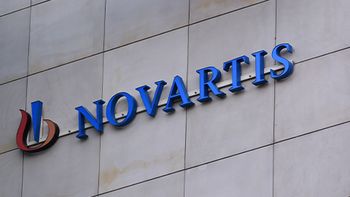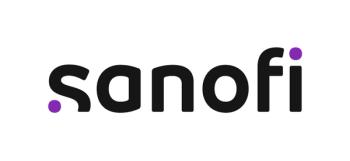
The successful abbreviated detail
Making the most of less than two minutes.
You walk into the doctor's office and you smooth-talk the receptionist or nurse to allow you to meet with the physician. The doctor walks out of the examination room on the way to see another patient. You have a new brochure, pen, Post-it note or mouse pad to flash in front of the doctor to attract his or her attention. You ask a question about your product, and a glaze goes over the doctor's eyes, giving you a signal that you hardly have his or her undivided focus. You abort your pre-planned detail and politely offer your hand-held computer or a form to sign for the samples, and you thank the doctor and his or her staff for their time. Been there, done that? If the answer is yes, you are like the other 87% of pharmaceutical representatives in this country who spend less than two minutes communicating with their physicians.
Why are physical presentation skills important? Many people form their first impression of a person in the first thirty seconds of an encounter or presentation. In that short period of time, most representatives have not had an opportunity to demonstrate their clinical knowledge, as they are still saying hello. Therefore, the first impression is based more on the body language or behaviors that lead the physician to view the representative as credible, caring and knowledgeable. This does not mean that clinical knowledge is not important; it means that knowledge alone is not enough - there is the delivery aspect as well.
Most representatives are very good at reading other people's body language. They can tell when a doctor is too busy just from the way he or she stands, moves, or looks at the patient's chart or their detail piece. What is equally important as reading other people's behavior is knowing that physicians are also subconsciously reading you, the representative. They are gauging your level of enthusiasm and confidence, whether or not you make eye contact, what inflections are in your voice, how you stand - all behaviors that help support the impression of you as a credible, confident and reliable source of information.
How can representatives use presentation skills to enhance their detail? The current reality of the world of pharmaceutical sales is that there are increasing numbers of representatives who call upon physicians, as well as other demands on physicians' time, such as increased paperwork and the need to see more patients every day. This translates to less time for the physician to know each and every representative. As a result, those first impressions become more important; a physician may have to quickly decide which representative gets his or her precious few minutes. Those representatives who are seen as credible, caring, knowledgeable and engaging will have more access, earn more undivided attention and make more of an impact because they bring more value from their brief visit.
Obtaining the physician's undivided attention. The three areas to focus on are eyes, voice and smile. The start of the call is a critical moment for eye contact. Take a few seconds to slow down, and make actual and engaged eye contact before launching into the sales call - no matter how rushed you feel. In fact, physicians often indicate that someone who actually engages them with eye contact first will get more time, because the physicians feel that this person has his or her interests at heart. Eye contact and a genuinely friendly hello have better attention-getting power than a case of Post-its, pens or scratch pads.
The representative should begin by making sustained eye contact - for as long as it takes to finish a complete thought - with the doctor. When describing an important message about the product, look directly at the doctor's eyes, not the detail piece, and complete the thought before moving on to the next point or topic. Physicians interpret this behavior as credible and honest.
The second skill area is voice. Our voices, through volume and inflection, convey impressions to the physician far beyond the content of our words. The goal is to be appropriately animated and conversational in tone in order to be more engaging. This means less reading directly from a study or visual, and more conversation. This also means slowing down, not by slowing the rate of speech, but through taking pauses or breaks, just as we all do when we are in a one-on-one conversation outside of a sales call. This will seem counter-productive, especially when you know that you only have two minutes and you are trying to impart as much information as possible. But physicians on the receiving end of two-minute "data dumps" report that they can hardly remember anything that was said. They are not engaged, because the information is coming at them so fast and furiously. With more pauses, the data you present begin to make sense in context, and the information has sticking power. Also, voices that sound enthusiastic and interested will help draw a physician into the call and help to gain his or her attention as well.
Finally, never underestimate the power of a smile. Wouldn't you rather talk to someone who is in a pleasant, happy mood? Be that person to your doctors - create a pleasant, happy and informative break in their day. Remember, doctors are continually stamping out fires and dealing with difficult patients, other doctors, a hassled staff and insurance companies. You can be sure that a smiling face will be an appreciated break in their busy day.
Planning an effective sales call. There is no substitute for preparation in making you feel confident about the call you are about to make. Without preparation, both in the area of clinical knowledge and in selling skills, no level of delivery skills will make you successful. Preparation supports your ability to make eye contact instead of reading the study verbatim, and allows you to comfortably have a conversation because you have anticipated the topics you might need to cover with this physician. Successful representatives marry a high level of preparation with the delivery skills that will enhance their effectiveness.
Non-verbal methods of enhancing the sales presentation. Watch your stance. When standing, stand upright, with your weight balanced equally. Why? Imagine walking down a hallway and seeing someone leaning up against a wall - does that person look happy to be there, engaged, ready to go? Not a chance. No matter how late - or how early - in the day, stand upright and balanced. At a glance, it helps you look confident, credible, energized and ready to go.
Today, doctors have less time to spend with pharmaceutical representatives but still want to be able to maintain their relationships with them. Representatives need to be able to get their point across in a timely and abbreviated fashion. This can be accomplished by focusing on maintaining eye contact, using their voices effectively and thinking about other non-verbal techniques of communication. PR
Newsletter
Lead with insight with the Pharmaceutical Executive newsletter, featuring strategic analysis, leadership trends, and market intelligence for biopharma decision-makers.




